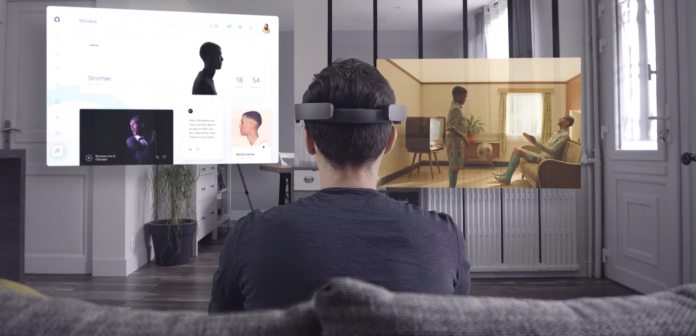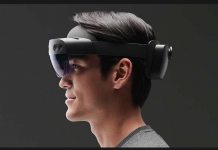The original and current HoloLens is inflicted by two clear problems. The first is prohibitive cost, which sees the headset cost over $3000. However, the hardware also has problems with Field of View (FOV). Specifically, the device only allows a FOV of 35 degrees. Developers and users have said this limited FOV harms the HoloLens, making it hard to use. It will be interesting to see how Microsoft deals with the cost of HoloLens 2, but in terms of FOV it seems the company is moving in the right direction. A newly discovered Microsoft patent shows the company is improving the optic capabilities of HoloLens. The filing titled “MEMS LASER SCANNER HAVING ENLARGED FOV” points to an improved mirroring and light system to achieve better FOV. Filed in December 2016, Microsoft describes the technology as such: “A MEMS laser scanner is disclosed for use in a near-eye display including an increased field of view (FOV). In embodiments, one or more polarization gratings may be applied to the mirror of the MEMS laser scanner, which polarization gratings may be configured according to the Bragg regime. Using light of different polarizations, the MEMS laser scanner is able to expand the FOV without increasing the range over which the mirror of the scanner oscillates.” As this patent has been around for a couple of years, it could mean Microsoft’s technology will be ready for HoloLens 2. Of course, as we often point out, patents also go untouched sometimes, so the company may never use this tech.
HoloLens 2
Microsoft has already said it will launch HoloLens to consumers in 2019. It is also known the company is working on a second version of the headset to meet that launch. HoloLens 2 will have an improved processing unit in the form of Qualcomm’s newly revealed XR1. Qualcomm’s chip was announced last month and is the world’s first dedicated CPU for virtual, mixed, and augmented reality. The main benefit of a dedicated processor allows OEMs to create hardware with integrated processing power. Moreover, the devices can be set up specifically for the advantages of the XR1. A device using the processor will simultaneously map, localize and detect objects (SLAM). This will happen in real-time to help make the environment more navigable.




